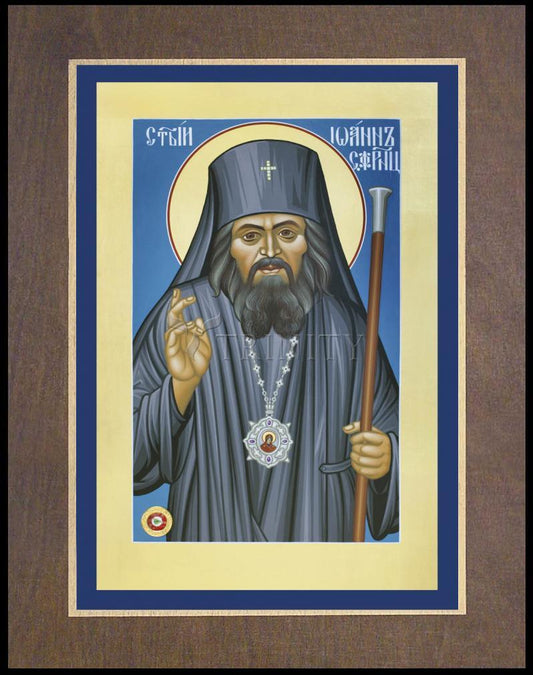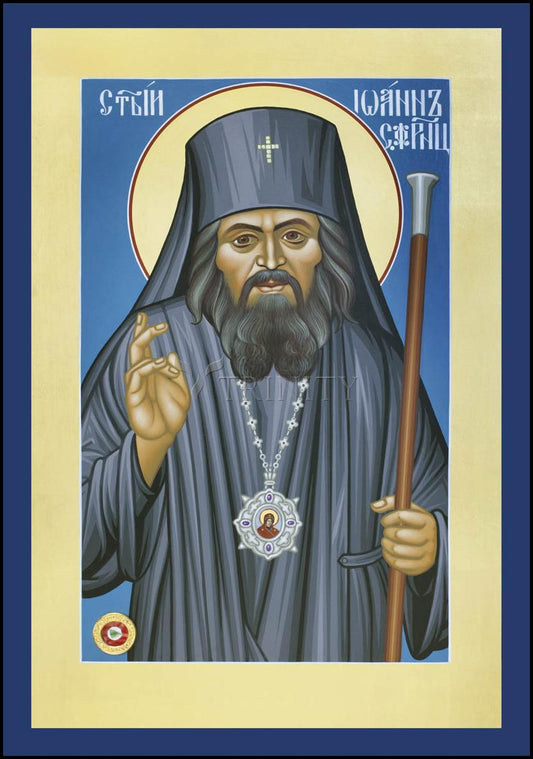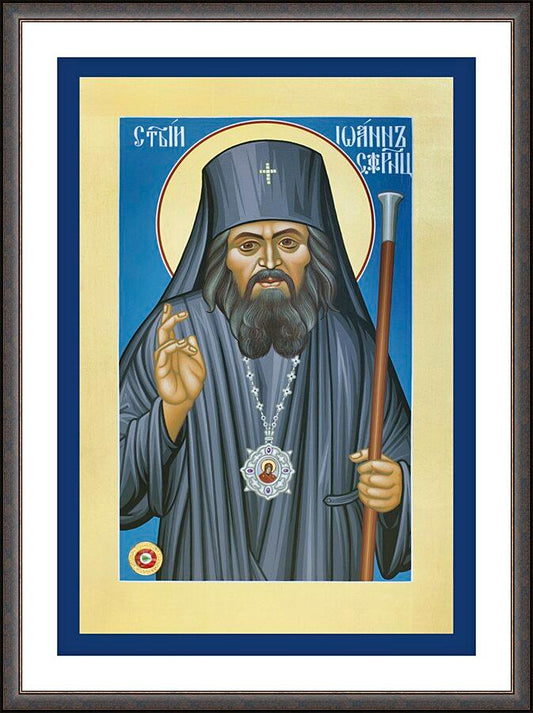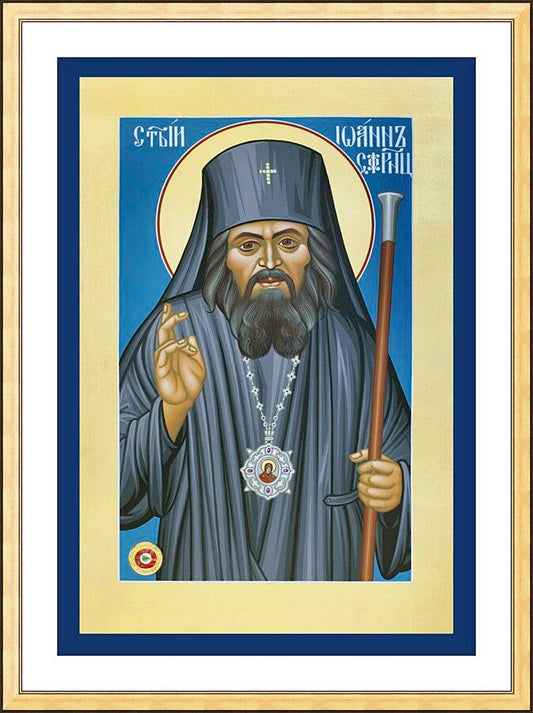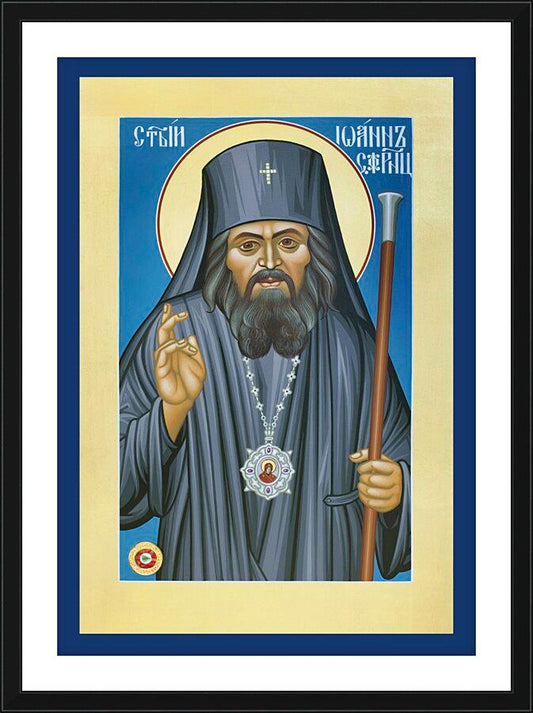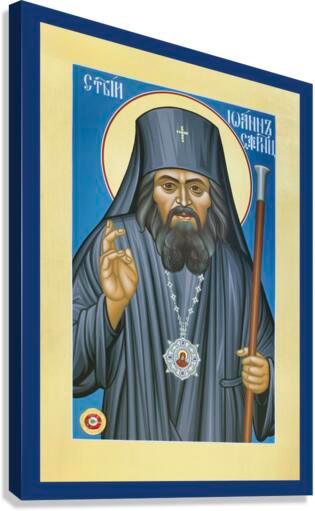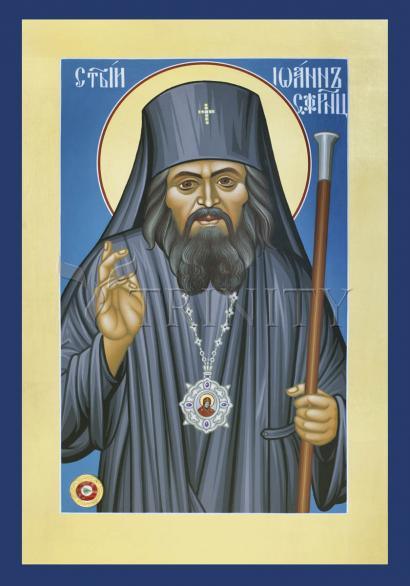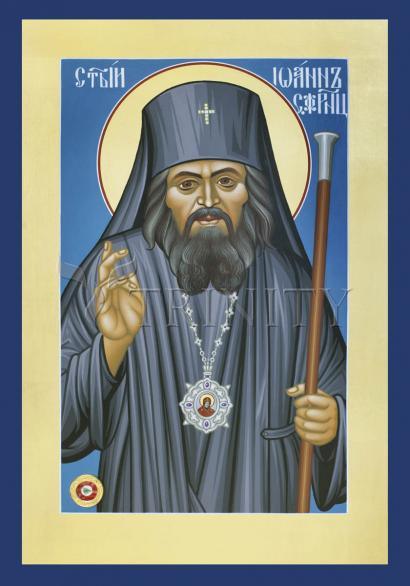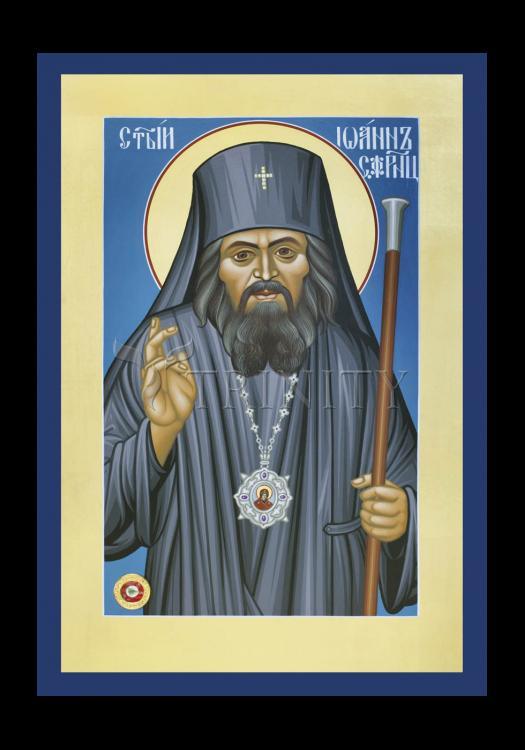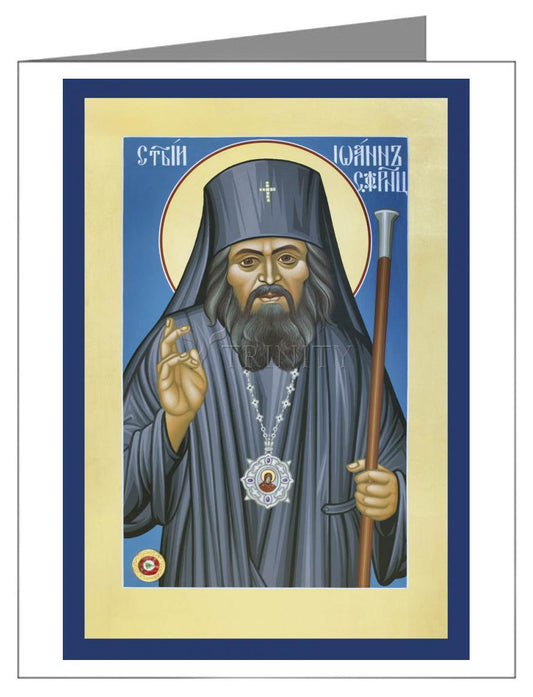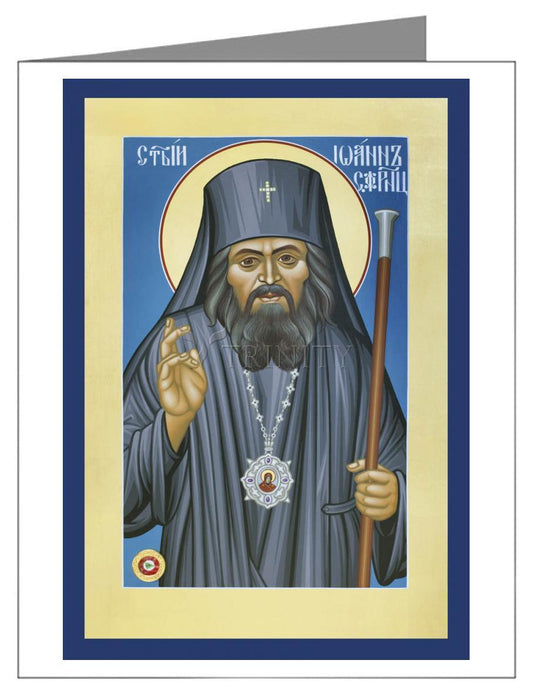St. John Maximovitch of Shanghai and San Francisco
"Holiness is not simply righteousness, for which the righteous merit the enjoyment of blessedness in the Kingdom of God, but rather such a height of righteousness that men are filled with the grace of God to the extent that it flows from them upon those who associate with them. Great is their blessedness; it proceeds from personal experience of the Glory of God. Being filled also with love for men, which proceeds from love of God, they are responsive to men's needs, and upon their supplication they appear also as intercessors and defenders for them before God."
St. John Maximovitch
What better description could be found to portray the essence of a man whose love for Christ drew him to such heights of spiritual perfection that he enkindled the faith of thousands from East to West? The life of St. John Maximovitch demonstrates more vividly than any words that true Christianity far exceeds the bounds of human "goodness". Here is a shining reflection of the supernatural love of God which works miracles, a living proof that the burning faith of the early Christian saints still warms the earth at a time when the love of many has grown cold.
St. John did not isolate himself from the world, but he was not of this world. First and foremost he was a man of prayer. He completely surrendered himself to God, presenting himself as a "living sacrifice" and he became a true vessel of the Holy Spirit. His work as an apostle, missionary and miracle worker continues even now.
This saint of the latter times was born June 4, 1896 in the province of Kharkov. At baptism he was given the name Michael. As a child he was serious for his years and he later wrote: "From the first days when I began to become aware of myself, I wished to serve righteousness and truth. My parents kindled in me a striving to stand unwaveringly for the truth, and my soul was captivated by the example of those who had given their lives for it."
Following the desire of his parents, he entered law school in Kharkov. He was a naturally gifted student but spent more time reading the Lives of Saints than attending academic lectures. "While studying the worldly sciences," he wrote, "I went all the more deeply into the study of the science of sciences, into the study of the spiritual life."
After the Revolution, he was evacuated together with his family to Belgrade where he entered the faculty of theology at the University. In 1926, a year after his graduation, he was tonsured a monk and given the name John, after his own distant relative, St. John of Tobolsk. In November of that same year, he was ordained hieromonk. Soon he became a teacher at the Serbian Seminary of St. John the Theologian at Bitol. More than once the bishop there, St. Nikolai Velimirovich, would say, "If you wish to see a living saint, go to Fr. John."
Ascetic
It was his own students who first became aware of Vladika's great feat of asceticism. At night they noticed that Vladika would stay up, making the rounds of the dormitories and praying over the sleeping students. Finally, it was discovered that he scarcely slept at all, and never in a bed, allowing himself only an hour or two each night of uncomfortable rest in a sitting position, or bent over on the floor, praying before icons. This ascetic feat he continued for the rest of his life.
At the age of 38 he was elevated to the episcopate of the Russian Orthodox Church Abroad, and was sent to Shanghai, China. There he restored Church unity, took an active interest in the religious education of youth, encouraged and participated in various charitable organizations founded an orphanage, and himself gathered sick and starving children off the streets. He always wore clothing of the cheapest Chinese fabric and often went barefoot, sometimes having given his sandals away to some poor man. Vladika celebrated Divine Liturgy and received Holy Communion daily, as he did for the rest of his life.
Wonderworker
In Shanghai it became evident that Vladika was not only a righteous man, but a true ascetic, a man of prayer and a wonderworker. Once in Shanghai Vladika John was asked to the bed of a dying child, whose case had been called hopeless by the physicians. Entering the apartment, Vladika John went straight to the room in which the sick boy lay, although no one had managed yet to show him where this was. Without examining the child. Vladika immediately fell down in front of the icon in the corner, which was very characteristic of him and prayed for a long time. Then, assuring the relatives that the child would recover, he quickly left. And in fact the child became better towards morning and he soon recovered, so that a physician was no longer needed.
Vladika loved to visit the sick and if the condition of a patient would become critical, he would go to him at any hour of the day or night to pray at his bedside. There were cases when patients would cry out to Vladika in the middle of the night from their hospital beds, and from the other end of the city Vladika would come.
Man of Prayer
With the coming of the communists, the Russians in China were forced once again to flee, most through the Philippines. At one time 5,000 of the refugees were living in an International Refugee Organization camp on the island of Tubabao, located in the path of the seasonal typhoons.
When the fear of typhoons was mentioned by one Russian to the Filipinos, they replied that there was no reason to worry, because "your holy man blesses your camp from four directions every night." They referred to Vladika John, for no typhoon struck the island while he was there.
In trying to resettle his flock, Vladika went to Washington, and through his intervention, almost the whole camp was miraculously able to come to America -- including his orphanage.
In 1951 Vladika was sent to Western Europe. Here too his reputation for holiness spread -- and not only among the Orthodox. In one of the Catholic churches of Paris, a priest strove to inspire his young people with these words: "you demand proofs, you say that now there are neither miracles nor saints. Why should I give you theoretical proofs, when today there walks in the streets of Paris a saint " St. Jean Nu-Pieds (St. John the Barefoot)."
Finally, in 1962, Vladika was sent to San Francisco in response to the urgent request of thousands of Russians who had known him in Shanghai. The Russian community was bitterly divided over the building of a new cathedral. Vladika became embroiled in this dispute and this eventually led to his persecution. But the Truth finally won out and a measure of peace was restored, the paralysis of the community ended, and the cathedral was finished.
Alive after Death
On June 19/July 2, 1966, during a visit to Seattle with the wonderworking Kursk Icon of the Mother of God, Vladika peacefully gave his soul to the Lord Whom he had served so faithfully during his earthly life. His unembalmed body was flown to San Francisco where for six days it lay in the cathedral in an open coffin, while thousands of the faithful came to say their last farewell to the beloved archpastor. Even after the sixth day it was noticed that there was no sign of decay.
Archbishop John was laid to rest in a small basement chapel under the altar of the cathedral after the San Francisco Board of Supervisors amended the City law to permit the burial of prelates in their cathedrals. His sepulchre became a place of pilgrimage for hundreds of people in need of his strong intercession before the throne of God. The many cases of answered prayer only confirm Vladika's words to one of his devoted servants when, after his death, he appeared to her in a dream and said: "Tell the people: although I have died, I am alive!"
On June 19/July 2, 1994 St. John Maximovitch was canonized in San Francisco and his relics rest today in the Joy of All Who Sorrow Cathedral for all the faithful to venerate.
"”Excerpts from "St. John Maximovitch of Shanghai and San Francisco" St. Herman Press



